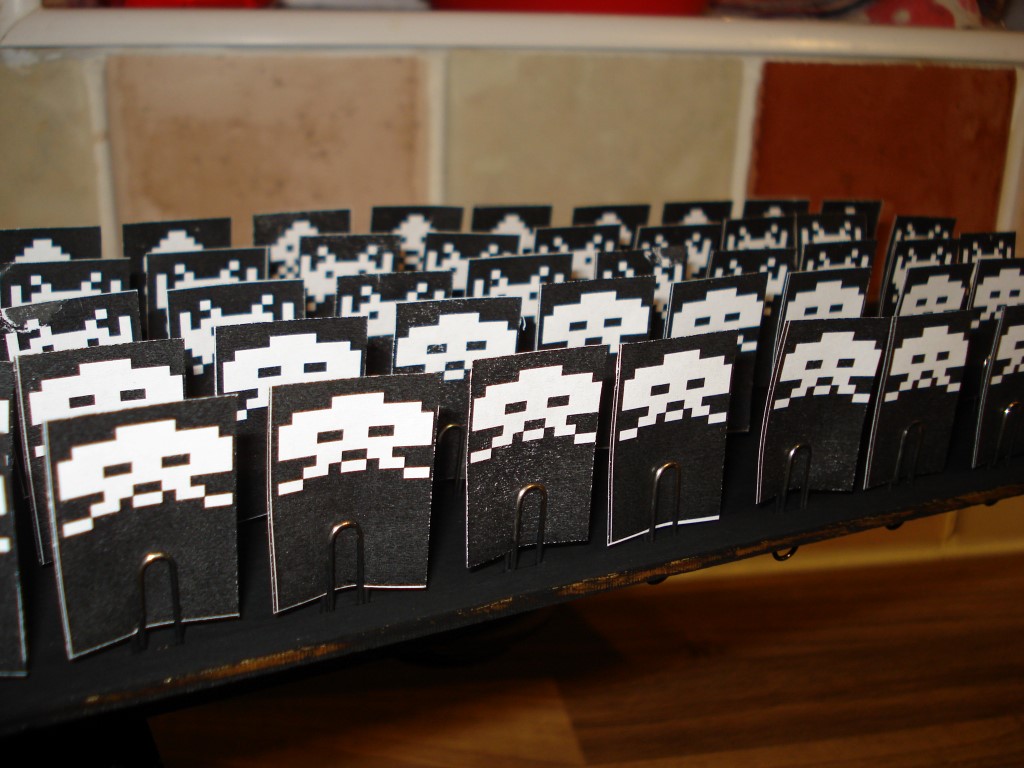
Through the kind of wit and ingenuity uniquely attributed to British makers, laser-cutting expert Martin Raynsford of Nottingham England created a real-life version of the 1978 arcade classic Space Invaders that uses actual lasers to disintegrate papers aliens. The project is a culmination of four months’ worth of design implemented in four to five nights of tinkering just in time for this year’s upcoming Arduino Day on March 28th — which is fitting, as the hazardous 80W laser used in the project is driven by an Arduino Nano controller linked to a PC via USB.

Essentially, paper aliens fashioned in the shape of those from the video game are clipped to a plate that uses stepper motors to move left to right and up and down, while the player responds by hitting keys on PC to move the laser left, right, or fire. Any alien hit with immediately catches fire, creating the illusion that one is actually vaporizing aliens. Because the laser is so potent and presents a real fire risk, Raynsford needed to complete a test burn before “the main event” to ensure the entire module wouldn’t burn down while scorching the invaders.
A detailed description of how the project was built can be found on Raysnford‘s website, but to summarize, he attached an Arduino Nano to a custom board outfitted with enough connectors to provide all the needed digital IO for the project: X, Y, and Z movement, step, laser On/Off and its pulse width modulation. The board is then linked to the PC using a USB outlet, from where it receives left/right/fire commands when a key is pressed and a stop command when it is released. A webcam is mounted on the machine to give the player an overhead view.
Advertisement
Learn more about Electronic Products Magazine





